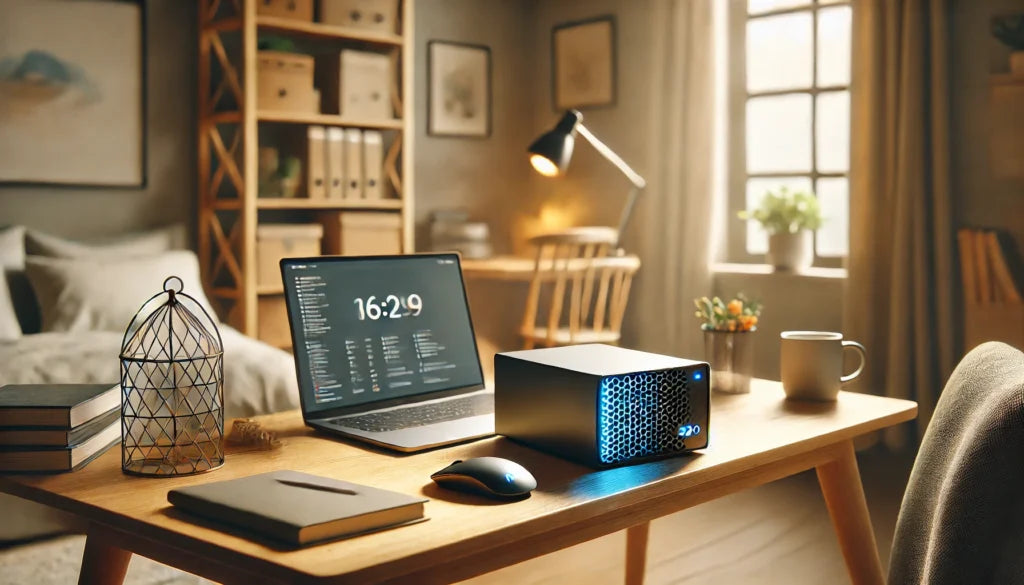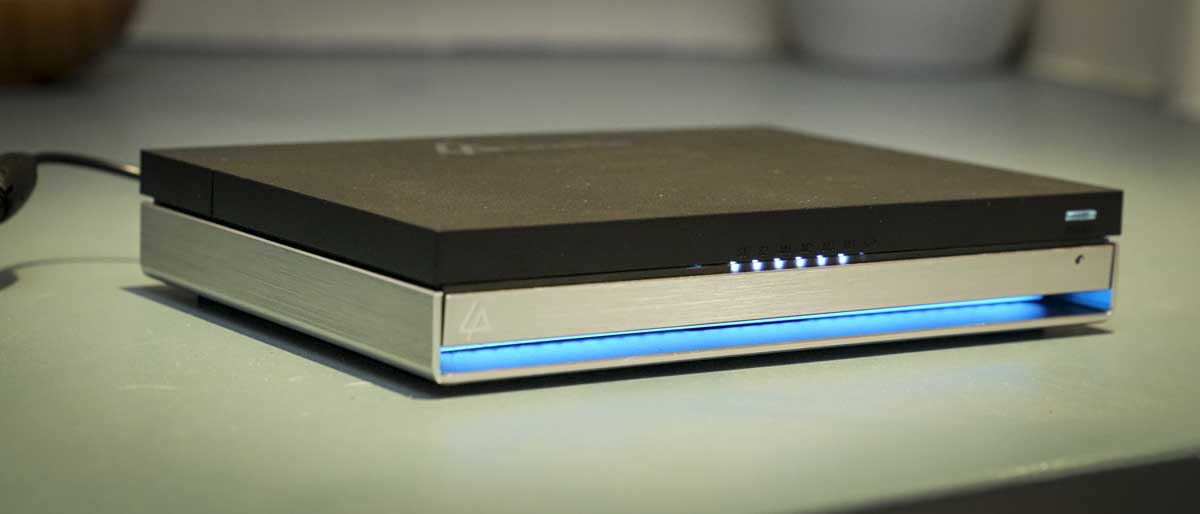Introduction: Own Your Data, Run Your Cloud
In a digital world where our lives are increasingly stored in the cloud, more and more people are asking:
- “Is there a better, safer, and cheaper way to store my data?”
- “Can I stop paying for Google Drive, Dropbox, or iCloud?”
- “What if I could run my own private cloud, media server, and backup solution?”
The answer? A mini home server.
This guide will explain what a mini home server is, why you should build one, and how it can replace expensive cloud services while giving you more control, privacy, and power.
What Is a Mini Home Server?
A mini home server is a small, energy-efficient, always-on computer connected to your home network. It acts as your:
- File storage hub
- Media streaming server
- Backup center
- Private cloud
- Self-hosted app server (Docker, VMs, etc.)
✅ Compact. Quiet. Low power. Always accessible.
Top Reasons You Need a Mini Home Server
1️⃣ Ditch Expensive Cloud Subscriptions
- Stop paying monthly for Google Drive, Dropbox, OneDrive, or iCloud. Store everything locally and securely.
2️⃣ Total Data Privacy
- Your data stays in your house, not in big tech data centers.
- No one scans, sells, or analyzes your files.
3️⃣ Media Streaming Freedom
- Host your own Netflix with Plex, Jellyfin, or Emby.
- Stream 4K movies, music, and family videos from anywhere.
4️⃣ Automated Backups
- Backup every PC, Mac, phone, and tablet in your home automatically.
- Snapshot your data for instant rollback in case of ransomware or mistakes.
5️⃣ Self-Hosting = Freedom
Run services like:
- Nextcloud (your private Dropbox)
- Bitwarden (password manager)
- Home Assistant (smart home automation)
- PhotoPrism (AI-powered photo gallery)
6️⃣ Energy-Efficient and Quiet
- Use as little as 10–15W power (compared to 300–500W for old servers).
- Fanless designs = silent operation.
What Can a Mini Home Server Do?
| Use Case | Apps/Features |
|---|---|
| File Storage & Backup | Samba, NFS, Nextcloud, Rsync, Time Machine |
| Media Server | Plex, Jellyfin, Emby |
| Self-Hosted Cloud | Nextcloud, OwnCloud |
| Home Automation | Home Assistant, Node-RED |
| Password Management | Bitwarden, Vaultwarden |
| Photo & Video Gallery | PhotoPrism, Immich |
| Web Hosting | WordPress, Ghost, Hugo |
| Virtualization | Proxmox, Docker, Portainer, Kubernetes (lightweight) |
Best Hardware for Mini Home Server in 2025
Key Requirements:
- Small form factor — Fits on a desk or shelf
- Low power consumption — 10W–40W idle
- Silent/fanless (if desired)
- Fast networking — 2.5GbE or 10GbE recommended
- Storage flexibility — Support for SSD (NVMe), HDD (SATA)
Recommended Mini Home Server Example:
| Product | LincStation N2 |
|---|---|
| CPU | Intel N100 (4-core, 6W TDP) |
| RAM | 16GB LPDDR5 |
| Storage | 4× NVMe + 2× 2.5" SATA |
| Networking | 10GbE RJ45 built-in |
| Power | ~10–15W idle |
| Size | Ultra-compact, |
| Use Case | Storage, Plex, Docker, Nextcloud, Backup |
Storage: SSD, HDD, or Both?
NVMe SSDs:
- Ultra-fast for apps, databases, cache, VM disks
- Silent, no moving parts
SATA HDDs:
- Best for bulk storage (photos, movies, backups)
- Reliable and cost-effective per TB
Best Setup:
- 1–2 NVMe drives for operating system + apps
- 2 SATA drives in RAID 1 for secure storage (mirrored backup)
Networking: Why 10GbE Is a Game Changer
- Transfer a 100GB video project in under 2 minutes
- Edit 4K/8K videos directly from your server
- Smooth multi-user access for families or small offices
✔️ With mini servers like LincStation N2, 10GbE is built-in, no upgrades needed.
Software Choices for Mini Home Server
| OS | Best For |
|---|---|
| TrueNAS Scale | ZFS storage, file server, Docker, VM support |
| Unraid | Flexible storage, Docker, media servers |
| Proxmox VE | Virtual machines + containers |
| OpenMediaVault | Lightweight NAS, file server |
| Ubuntu/Debian | General purpose server, Docker, web hosting |
| LincOS | Simple GUI for LincStation N2 |
Security: Keeping Your Server Safe
- Use strong passwords + 2FA
- VPN for remote access (WireGuard, OpenVPN)
- Firewall enabled
- Automated updates
- Snapshots + backups (instant rollback if attacked)
- Don’t expose SMB/FTP ports to the internet — use VPN!
Remote Access: Your Cloud, Anywhere
- Access files remotely via Nextcloud
- Stream movies from Plex or Jellyfin while traveling
- Manage Docker apps from any device
- VPN protects all remote connections
Mini Home Server Example Setup: Photographer + Family Cloud
| Role | Function |
|---|---|
| File Storage | 8TB HDD RAID1 (photos, docs, backups) |
| App SSD | 500GB NVMe (OS, Docker, Nextcloud) |
| Media Server | Plex streaming 4K video to smart TVs |
| Backup System | Daily backups from family PCs + phones |
| Private Cloud | Nextcloud for calendar, contacts, files |
| Smart Home Automation | Home Assistant with Zigbee devices |
Why Mini Home Server Beats Cloud + External Drives
| Mini Home Server | Cloud Services / External Drives |
|---|---|
| ✅ One-time cost | ❌ Monthly fees forever |
| ✅ Private, no 3rd party | ❌ Data on someone else’s server |
| ✅ Fast local speeds (10GbE) | ❌ Cloud upload/download bottlenecks |
| ✅ Unlimited storage growth | ❌ Pay for extra TBs |
| ✅ Fully customizable | ❌ Limited features, closed ecosystem |
Future-Proof Your Digital Life
- Data sovereignty — Your files = your rules
- Self-host your life — No more SaaS lock-in
- Energy-efficient — Eco-friendly, quiet, small footprint
- Faster than cloud — Especially with 10GbE and NVMe
Conclusion: A Smart Choice in 2025
A mini home server gives you:
- Secure, private file storage
- 4K media streaming anytime, anywhere
- Fully automated backups
- The freedom to run the apps you want
- A private cloud with no subscriptions
Whether you’re a creator, freelancer, family, or small business, a mini home server like LincStation N2 is the smartest investment for digital independence in 2025.




Commenta
Nota che i commenti devono essere approvati prima di essere pubblicati.
Questo sito è protetto da hCaptcha e applica le Norme sulla privacy e i Termini di servizio di hCaptcha.